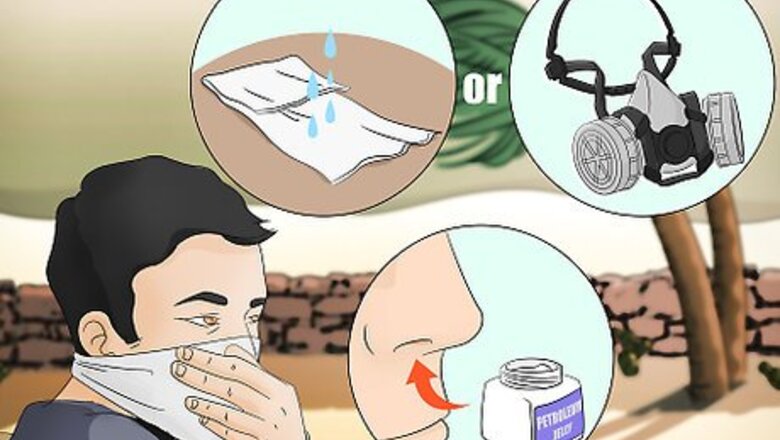
views
Surviving a Storm on Foot
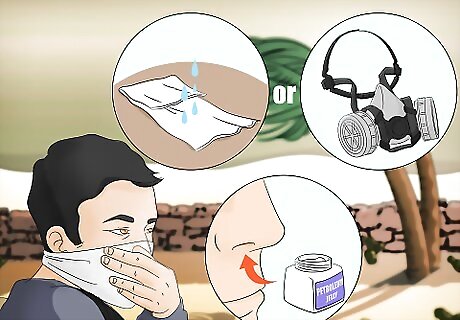
Put a mask over your nose and mouth. If you have a respirator or mask designed to filter out small particulates, put it on immediately. If you don't have a mask, wrap a bandanna or some other piece of cloth around your nose and mouth. A shirt sleeve or a medium-sized sheet works good. Moisten it a bit if you have enough water. Apply a small amount of petroleum jelly to the inside of your nostrils to prevent drying of your mucus membranes.
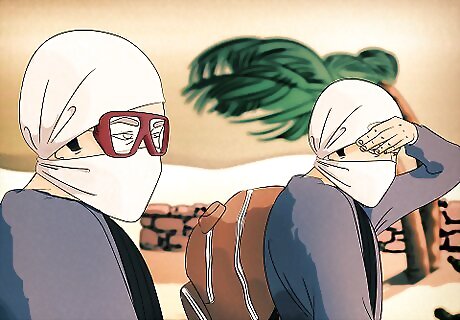
Protect your eyes. Eyeglasses offer minimal protection from blowing dust or sand, but airtight goggles are better. If you don't have goggles, shield your face with your arm as you move, then wrap a piece of cloth tightly around your head to protect your eyes and ears.
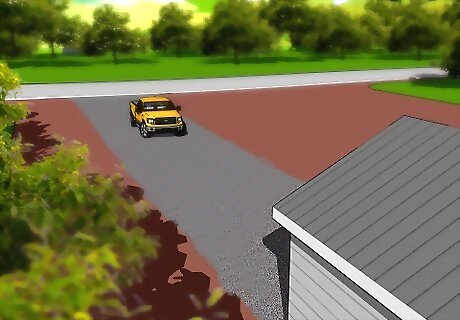
Look for shelter. Even a parked car will do, if you do not have shelter, hide behind a giant rock. When possible, enclosures are your best bet. However, anything "leeward" (shielding you from the direction of the wind) of the storm will be better than nothing. Sand will bounce around when it hits objects, so you should still try to cover as much of your skin and face as possible. If you cannot get to shelter, crouch down. It minimizes the chance you'll get hit by something flying.
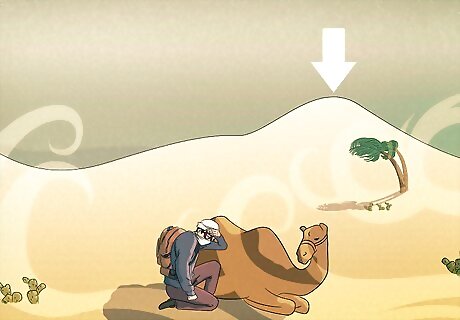
Get to high ground. The densest concentration of sand or dust bounces close to the ground, so the storm will be less forceful at the top of a hill. Seek high ground if you can find a safe, solid, high point, but only if the storm is not accompanied by lightning and there is no danger of being struck by heavier flying debris. Do not lie in a ditch, as flash flooding may occur even if no rain is falling where you are. In the actual dust cloud, rain generally dries up before it reaches the ground, but it may be raining nearby, and ditches, arroyos, and other low-lying areas can quickly flood. If you have a camel, have it sit down and press yourself against its leeward side. Camels are well adapted to surviving in dust storms. If you're in sand dunes, do not seek shelter right on the leeward side of the dune. The high winds can pick up huge amounts of sand very quickly, and you could find yourself being buried in sand.
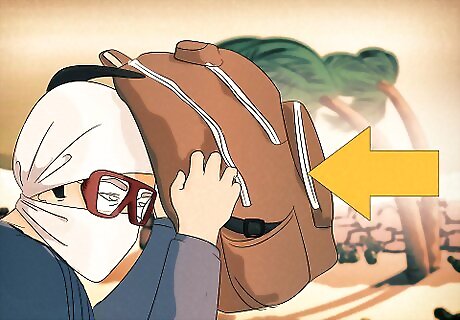
Shield yourself from flying objects. Seek out a large rock or other landform to protect you at least partially. Cover as much of your body as possible to protect yourself from flying sand. Wind-propelled sand can hurt, but a dust storm's high winds can also carry heavier (more dangerous) objects. If you find yourself without shelter, try to stay low to the ground and protect your head with your arms, a backpack or a pillow.
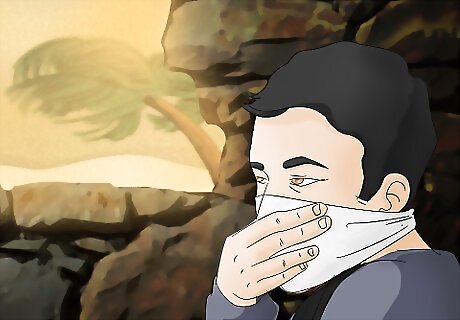
Wait out the storm. Don't try to move through the storm; it's much too dangerous. Stay where you are and wait for it to pass before you attempt to move to a different location. If you can quickly reach such shelter before a dust storm reaches you, get there as quickly as possible and stay inside. Close all windows and doors, and wait out the storm. If you're with other people, stick together to minimize the chances that someone gets lost.
Surviving a Storm in a Car
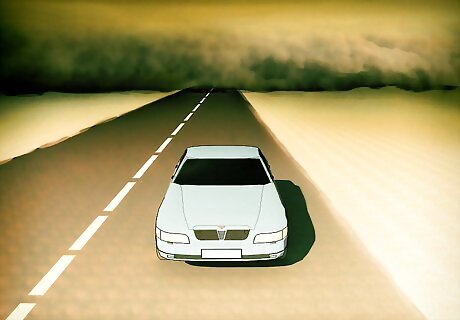
Try safely outrunning the storm. If you see a dust storm from some distance, and you are in a vehicle or have access to one, you may be able to outrun it or detour around it. Some dust storms can travel at more than 75 mph (121 km/h), but they frequently travel much slower. Trying to outrun a storm, however, is not advisable if you have to put yourself at risk by traveling at high speeds. If the storm is catching up with you, it's best to stop and prepare for it. Once consumed by the storm, your visibility can potentially be reduced to zero in a matter of seconds. Do not try to outrun a storm on foot. Wind storms are unpredictable, and you could be easily overcome if it suddenly changes direction or picks up speed. Drive to a safe place where you can take shelter until the storm passes.
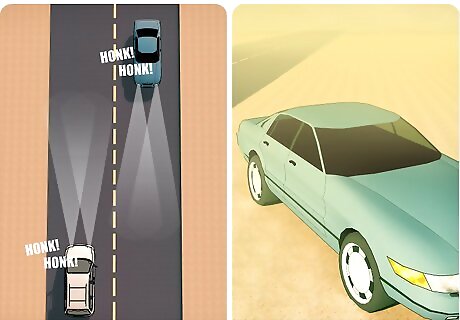
Pull the car over and stop. If you're in transit and visibility drops to less than 300 feet (91.4 m), pull off the road (exit the freeway if possible), set your parking brake, turn off your headlights, and make sure brake lights and turn signals are also off. If you are unable to safely pull off the road, keep your headlights on, turn on your hazard lights, slow down, and proceed with caution, sounding your horn periodically. Use the highway's centerline to guide you if you can't see in front of you. Pull over at the nearest safe spot. Turning your headlights off while stationed off the road will reduce the possibility of a rear-end collision. In many cases, if your exterior lights are on, other drivers will use the taillights of the person in front of them as a guide to help navigate the road ahead of them. If you are pulled off the road and are sitting there with your lights on, someone might think they can follow you and run right off the road or even collide with you.
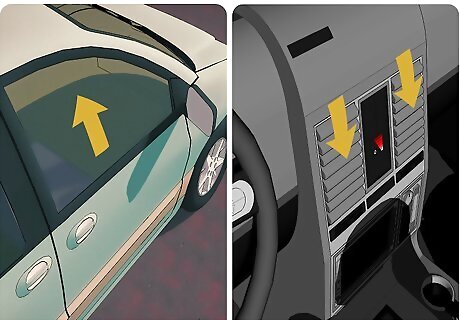
Take cover and stay put. Do not attempt to move about in a blinding storm, as you will not be able to see potential hazards in your path. Roll up the windows and turn off vents that bring outside air in. Don't move your vehicle until the storm has safely passed.
Thinking Ahead for Next Time
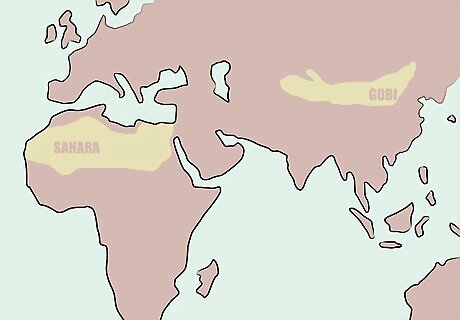
Know where dust and sand storms occur. Both types of storms are most commonly associated with the Sahara and Gobi desert regions, they can occur in any arid or semi-arid climate. If you live in or are traveling in a dusty or sandy place with high winds, prepare yourself in case you get caught in a storm.
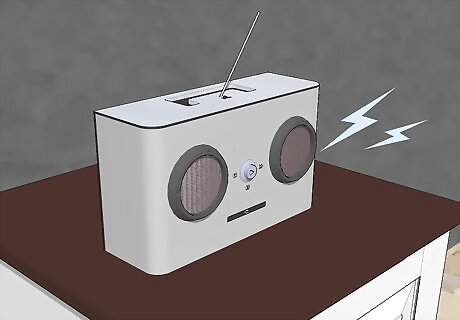
Heed dust storm warnings. Dust storms are most likely to occur on hot summer days under certain atmospheric conditions, and meteorologists can frequently predict the possibility of these storms. Tune in to local TV or radio broadcasts before traveling in hot, dry conditions, and consider rerouting or delaying your trip if dust storms are predicted. Roadside signs may also be available to warn you of dust storm danger. If there's a good chance you'll get caught in the storm, it's advisable not to travel at all. Stay home and batten down the hatches so you won't risk getting hurt or damaging your car.
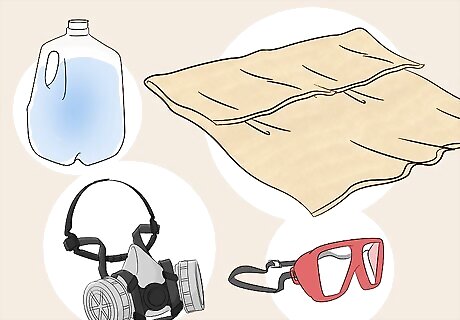
Be prepared in case of an emergency. If you are in a storm-prone area, you should always be aware that a storm could occur. If you'll be outside for a long period of time, wear long sleeves and pants to protect your body. Carry a satchel or keep a box in the trunk of your car filled with items you need in the event of a sand or dust storm. Fill the emergency kit with these items: A mask designed to filter out small particulates Airtight goggles A water supply A warm blanket, in the event of a winter dust storm, which can quickly lead to hypothermia.


















Comments
0 comment